Inspect greenhouses to mitigate heat loss during sub-zero temperatures
Inspect greenhouses to mitigate heat loss during winter months and sub-zero temperatures and protect plants from chilling injury or freezing damage.

Over the past few days, snow has finally blanketed Michigan and according to the Michigan State University Enviroweather stations in Coldwater, Commerce, East Lansing, Flint, Hudsonville, Kalamazoo, Romeo and West Olive, Michigan, sub-zero temperatures ranging from -5 to -18 degrees Fahrenheit have been recorded. These locations and other cities located in southwestern to central to southeastern Michigan are home to many greenhouse operations.
During the winter, including sub-zero temperatures, most greenhouse operators strive to maintain temperature set points between 60 and 72 F to ensure crop growth and development. Consider the following tips and techniques in order to not delay crops, mitigate heat loss and prevent potential chilling injury or freezing damage to crops.
- Inspect growing structures, poly-carbonate, exhaust fans and louvers, and doors for air leaks or holes and other passageways for heat loss (exfiltration) or cold entry (infiltration). Consider repairing or replacing polyethylene, polycarbonate or glass panes, or patching holes or tears to prevent heat loss (Photo 1).
- Insulate end walls or not in-use exhaust fans with insulation boards (Photo 2).
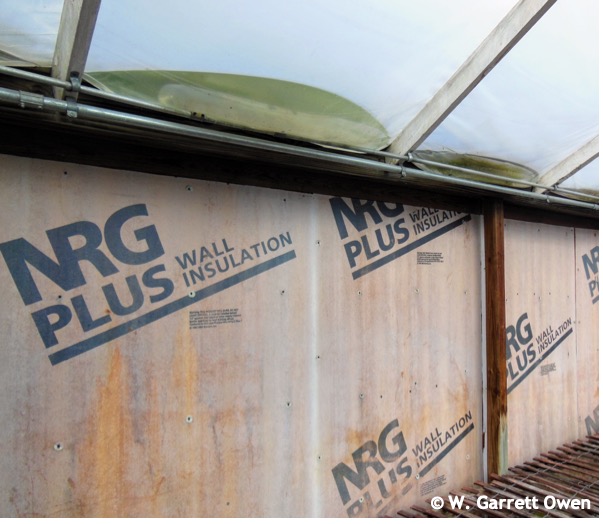
- Cover exhaust fan (Photo 3A) and louver openings (Photo 3B) inside the greenhouse with plastic. Ensure the exhaust fans and louvers are powered off or not in-use when covered.
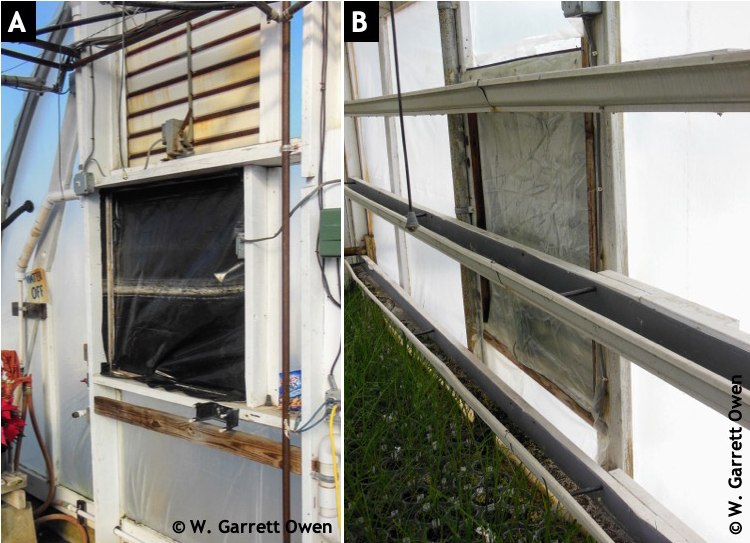
- Cover greenhouse exit doors (Photo 4) that are not in-use to prevent heat loss and cold air from leaking into the greenhouse. Note, for emergencies and the safety of employees, ensure that not all greenhouse doors or exits are covered. Updated emergency plans or routes may be required.
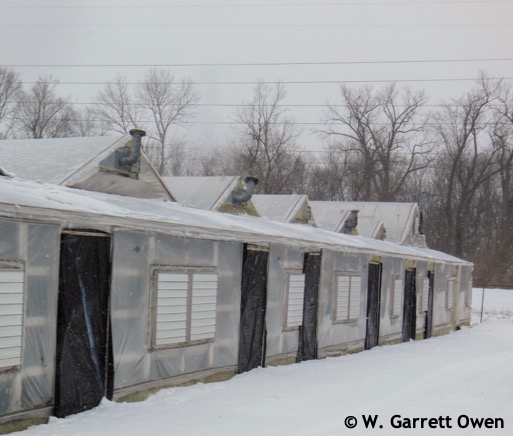
- Construct cold air barriers or temporary walls made of greenhouse material (Photo 5) to protect plants from chilling injury or freezing damage (Photo 6). This technique is often used when plants are grown on the floor near high-traffic greenhouse doors that lead outside.
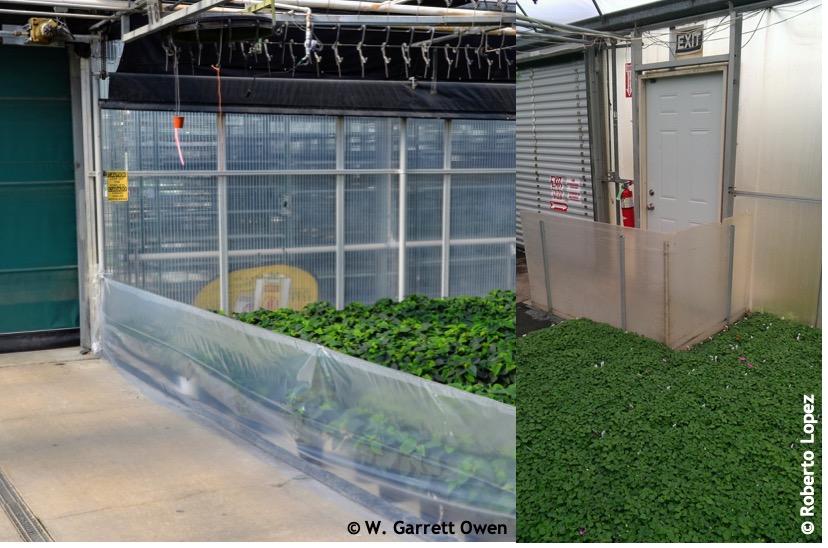
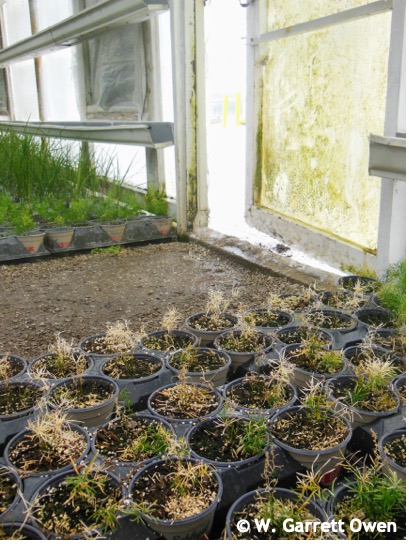
- Create “false” walls (Photo 7A) and ceilings (Photo 7B) with plastic to reduce heating a larger area than needed.
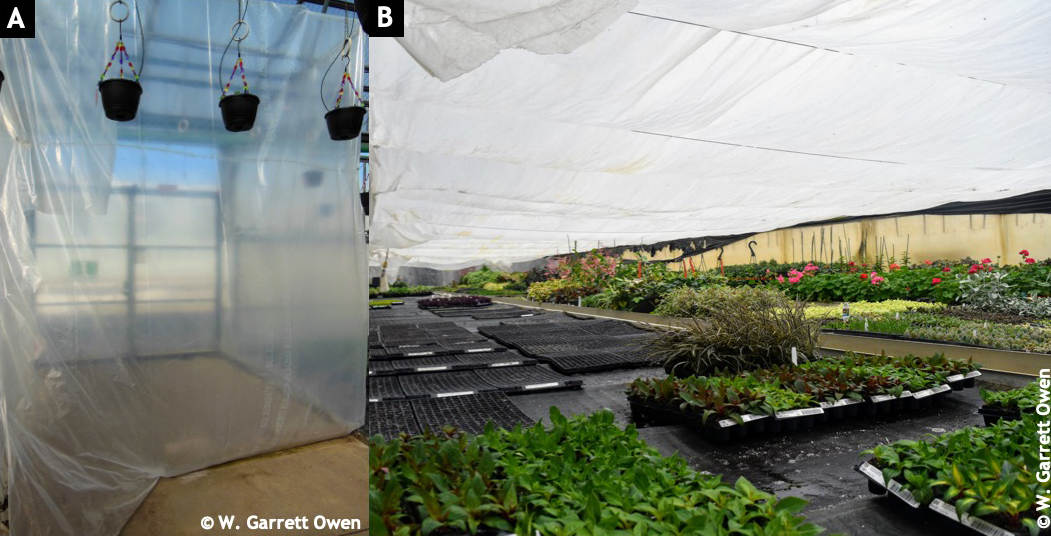
- Deploy thermal energy curtains to retain heat (Photo 8).
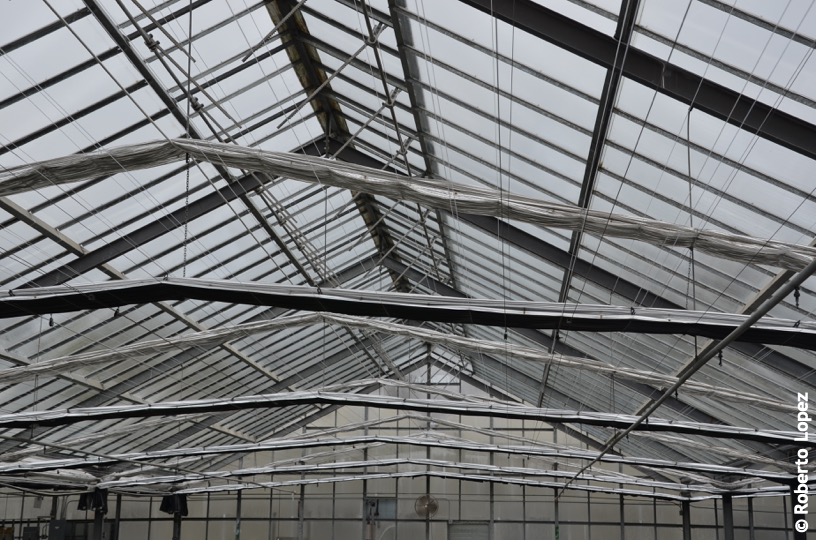
- Ensure double-poly inflation or blower fans are installed correctly and the two layers of double-poly are inflated creating an insulation barrier. Inflation fans that are installed correctly, pull air from outside the greenhouse. In some instances, inflation fans may be installed incorrectly, thus pulling air from inside the greenhouse causing condensation in between the layers, water accumulation and freezing (Photo 9). Other times, inflation fan may have failed or the intake or exhaust manifolds are closed, thus preventing the inflation between the two layers of double-poly. For more information, refer to e-GRO Alert 3.33: Is Your Double-Poly Greenhouse Properly Inflated with Outside Air?
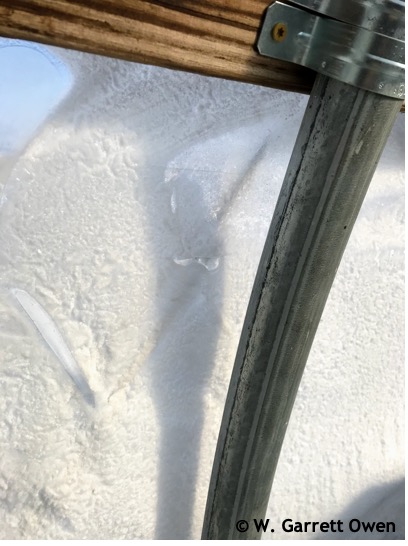
- Replace or add weather stripping to greenhouse doors and to seals of other openings.
- Minimally heat greenhouses that are not in use to prevent frozen pipes and excessive snow loads.
By using these tips and techniques, we hope you will be able to mitigate heat loss and protect your greenhouse crops from potential chilling injury or freezing damage. For more information, refer to e-GRO Alert 4.9: Checklist for Reducing Greenhouse Heating Costs this Winter.



 Print
Print Email
Email

